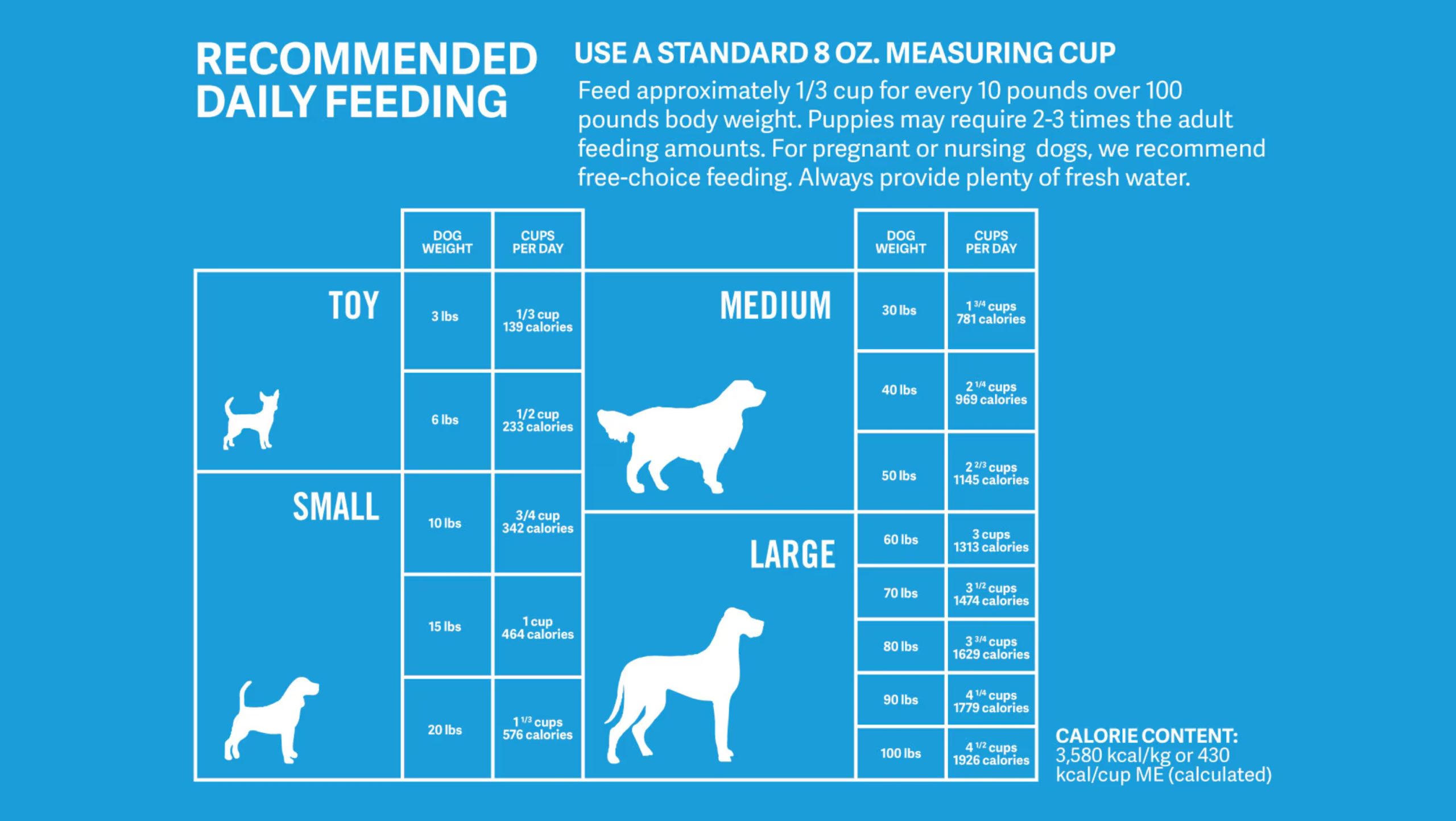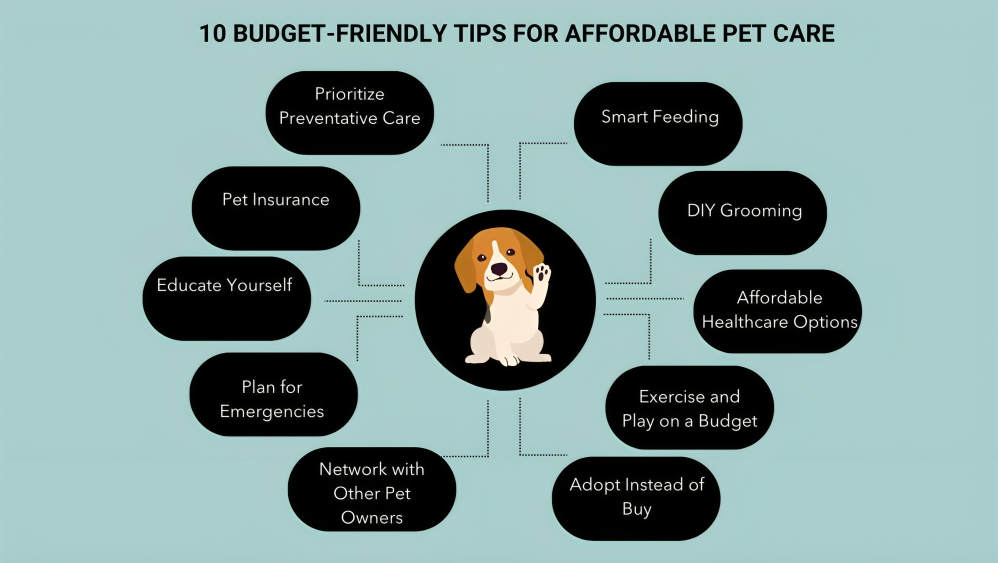How Many Cups in 40 Lbs. of Dog Food: The Ultimate Measurement Guide?
There are approximately 181 cups in 40 lbs of dog food. As a pet owner, it’s important to have an accurate understanding of your pet’s nutritional needs. One common question that may arise is how many cups are in a specific quantity of dog food. This knowledge can help you plan and portion your pet’s meals accordingly. So, if you have a 40 lb bag of dog food, you can expect to find approximately 181 cups of kibble inside.
This measurement can serve as a useful reference when determining feeding schedules and calculating the appropriate amount of food for your furry friend. By being aware of the cup-to-weight ratio, you can ensure that your dog receives the proper nutrition without over or underfeeding them.
READ MORE…..
Understanding The Conversion Ratio
When it comes to understanding the conversion ratio for dog food, it’s important to know how many cups are in 40 lbs of dog food. The conversion ratio helps us determine the amount of food we need to feed our furry friends.
To calculate the number of cups in 40 lbs of dog food, we need to break down the calculation from pounds to cups. It is worth noting that the standard conversion ratio of dog food varies depending on the specific brand and type.
For a general approximation, a standard conversion ratio is about 4 cups of dog food per pound. Applying this ratio, we can estimate that 40 lbs of dog food would be equivalent to approximately 160 cups. However, this is just a rough estimation, and it’s crucial to refer to the specific feeding instructions provided by the dog food brand to ensure the proper portion sizes for your pet’s unique needs.
Factors Affecting Cup Conversion
Cup conversion for dog food can vary depending on several factors, including kibble size and density. When converting pounds of dog food to cups, it’s important to consider these factors to ensure accurate measurements for feeding your furry friend.
Different brands and types of dog food have varying kibble sizes, and this can affect the volume of food in a cup. Larger kibble may take up more space, resulting in fewer cups per pound, while smaller kibble may allow for more cups per pound.
Density is another factor to consider. Heavier and denser dog food will require fewer cups to reach the same weight as lighter or less dense options.
| Factor | Impact on Cup Conversion |
| Kibble Size | Larger kibble may result in fewer cups, while smaller kibble may allow for more cups. |
| Density | Heavier and denser food requires fewer cups, while lighter or less dense food may require more cups. |
It’s essential to refer to the specific feeding instructions and guidelines provided by the dog food manufacturer. These guidelines are designed to help ensure your dog receives the appropriate amount of nutrition for their size, age, and activity level.
Calculating Cup Amounts for Specific Brands
Examining common dog food brands and their recommended cup amounts
When it comes to determining the number of cups in 40 lbs of dog food, it is essential to consider the specific brand you are using. Different brands have different recommended cup amounts per pound of food.
| Brand | Recommendation per lb | Number of cups in 40 lbs |
| Brand A | 1 cup | 40 cups |
| Brand B | 0.75 cups | 30 cups |
| Brand C | 0.5 cups | 20 cups |
In this table, we provide examples and calculations for popular dog food brands. Brand A recommends 1 cup per pound, resulting in 40 cups for 40 lbs of dog food. Brand B suggests 0.75 cups per pound, which equals 30 cups for 40 lbs. Finally, Brand C recommends 0.5 cups per pound, totaling 20 cups for 40 lbs.
It’s important to note that these calculations are specific to the mentioned brands and their recommendations. Always consult the packaging or manufacturer’s guidelines for accurate cup amounts based on your chosen brand.
Adjusting Cup Portions for Different Dog Sizes
The amount of dog food to feed your furry friend depends on various factors, including their size and metabolism. When determining cup portions, it’s essential to consider these factors for a balanced and healthy diet.
Small Dogs: Smaller breeds typically have faster metabolisms, so they require more calories per pound of body weight compared to larger dogs. As a general guideline, small dogs require about 1/2 to 3/4 cups of food per day for every 10 pounds of body weight.
Medium Dogs: Medium-sized breeds, such as beagles or bulldogs, have average metabolisms. Aim for approximately 1 cup of food per day for every 20 pounds of body weight. However, be sure to monitor your dog’s weight and adjust portions accordingly.
Large Dogs: Larger breeds, like retrievers or German shepherds, tend to have slower metabolisms. They may require around 1 1/2 to 2 1/2 cups of food per day for every 30 pounds of body weight. Regularly monitor their weight and adjust portions as necessary to avoid overfeeding.
Remember that individual dogs may have unique dietary needs, so it’s always best to consult with a veterinarian to determine the appropriate cup portions for your specific dog.
Special Considerations for Puppies and Senior Dogs
Feeding dogs is an essential aspect of their overall health and well-being. When it comes to the measurement of dog food, it is crucial to understand how many cups are in a certain weight. For example, if you are wondering how many cups are in 40 lbs of dog food, it can vary depending on the brand and type of food. However, a general guideline is that 40 lbs of dog food is roughly equivalent to 160 cups. It is important to note that special considerations need to be taken into account for puppies and senior dogs.
Puppies have unique nutritional needs to support their growth and development. They require a higher caloric intake and specific nutrients such as DHA for optimal brain and vision development. It is recommended to feed them according to their life stage and follow the cup recommendations provided by the manufacturer.
Senior dogs, on the other hand, have different requirements due to age-related changes. They may have lower activity levels and slower metabolism, requiring fewer calories. Additionally, they may benefit from joint support and supplements for conditions like arthritis. Cup recommendations for senior dogs should be adjusted based on their individual needs and consult with a veterinarian for specific guidance.
Understanding the cup measurements of dog food and taking into account the special considerations for puppies and senior dogs are crucial for providing them with a balanced and appropriate diet.
Measuring Tools and Techniques
In order to accurately measure dog food portions, it’s important to have effective measuring tools. One recommended tool is a measuring cup or scoop specifically designed for pet food, which typically has markings for different portion sizes. This ensures consistency in measuring each time. Another useful tool is a kitchen scale, which allows for precise measurements by weight. By using a scale, you can accurately measure the exact amount of dog food needed without relying solely on volume. When measuring with a cup or scoop, it’s important to fill it to the top and level off the excess to ensure an accurate portion. Additionally, it’s important to measure the food before it is served to avoid any confusion or inconsistency. By following these tips and utilizing the appropriate measuring tools, you can ensure that your dog receives the correct portion of food for their needs. Dog Food Weight Conversion Guide.
Keeping an Eye on Your Dog’s Body Condition
Discussing the importance of monitoring your dog’s weight and body condition can help ensure their overall health and well-being. It is essential to regularly assess your dog’s body condition score to determine if adjustments are needed in their diet. Just like humans, every dog is different and may have different nutritional needs. Adjusting cup portions based on your dog’s body condition score can help you maintain their ideal weight and prevent health issues. Dog Food Weight Conversion Guide
| Body Condition Score | Recommended Adjustments |
| Underweight | Increase cup portions to help them gain weight. |
| Ideal Weight | Maintain cup portions to keep them at a healthy weight. |
| Overweight | Decrease cup portions to help them lose weight. |
Regularly monitoring your dog’s weight and body condition score can help you make informed decisions regarding their feeding portions. However, it is always recommended to consult with a veterinarian for personalized advice and guidance tailored to your specific dog’s needs.
Consulting with A Veterinarian
| When it comes to feeding your dog, it is important to consult with a veterinarian. Veterinarians have the knowledge and expertise to provide personalized feeding advice for your furry friend. They can help you understand the specific dietary needs of your dog and recommend the appropriate amount of food to ensure their health and well-being. Consulting with a veterinarian is especially important for dogs with specific dietary needs. These can include dogs with certain medical conditions, allergies, or weight management issues. By seeking professional guidance, pet owners can make informed decisions about their dog’s nutrition and prevent any potential health problems. Remember, every dog is unique, and what works for one may not work for another. Emphasize the importance of consulting with a veterinarian to ensure the best possible nutrition for your dog. |
| Moreover, pet owners should be aware that dog food labels only provide general feeding guidelines, which may not be suitable for every dog. Consulting with a veterinarian can help pet owners create a feeding plan tailored to their dog’s specific needs. If you have concerns or questions about your dog’s diet, don’t hesitate to reach out to a veterinarian. They are there to support you and your pet’s well-being. Dog Food Weight Conversion Guide. |
Frequently Asked Question
How Many Cups Is 40lbs Dog Food?
40 lbs. of dog food is approximately 90 cups.
How Many Cups Of Dry Dog Food Are In A 50 Lb. Bag?
A 50 lb. bag of dry dog food contains approximately 160 cups.
How Many Cups Is 30 Lbs. of Dog Food?
30 lbs. of dog food is approximately equal to 120 cups.
How Many Cups Are in A 30lb Bag Of Food?
A 30lb bag of food contains approximately 120 to 130 cups.
Final Thought
To sum up, understanding how many cups are in 40 lbs of dog food is crucial for maintaining your canine’s proper diet. By knowing the conversion rate, you can ensure you are providing your furry friend with the appropriate portions, promoting their overall health and well-being. Keeping a close eye on their food intake helps to prevent obesity and related health issues. Consult with your veterinarian for personalized advice on portion sizes and nutritional requirements for your specific dog breed. Maintain a happy and healthy life for your canine companion! Dog Food Weight Conversion Guide




